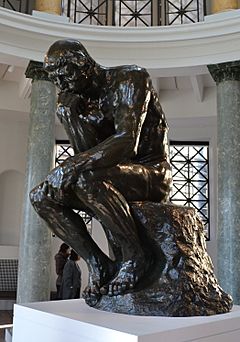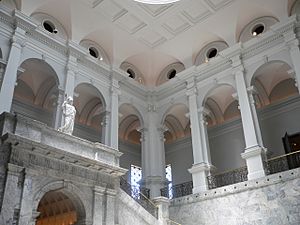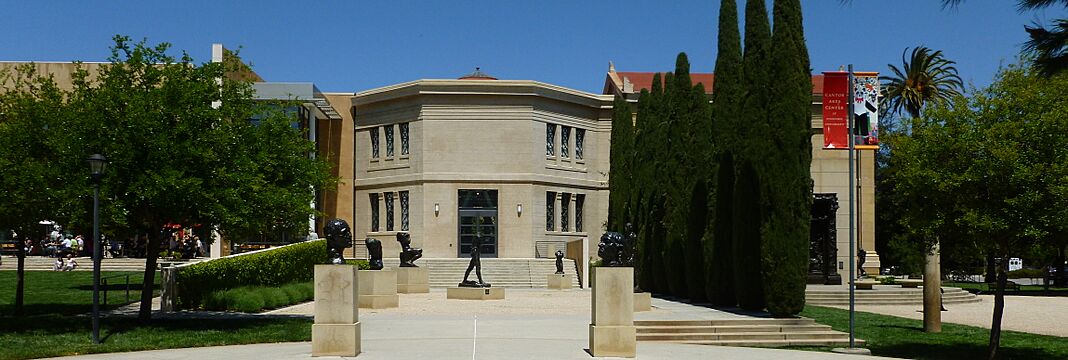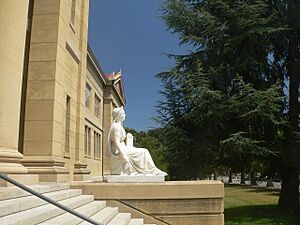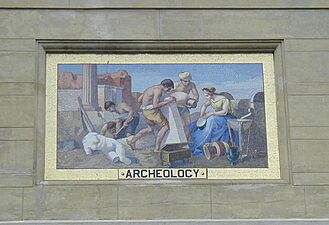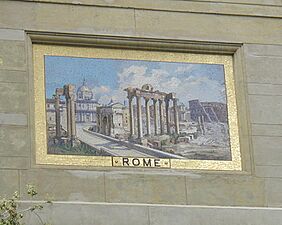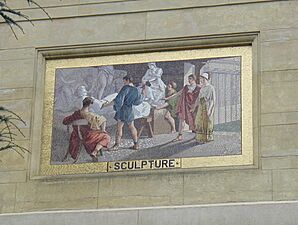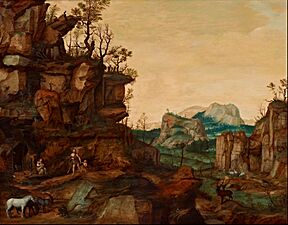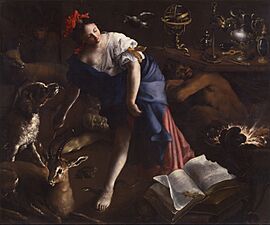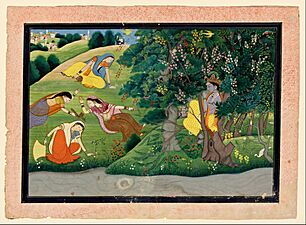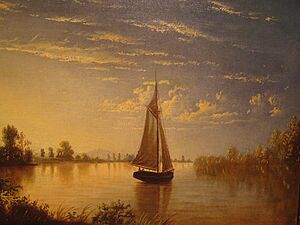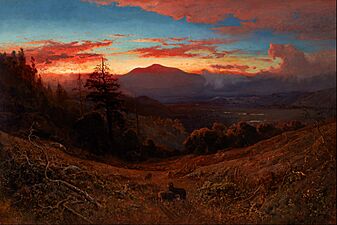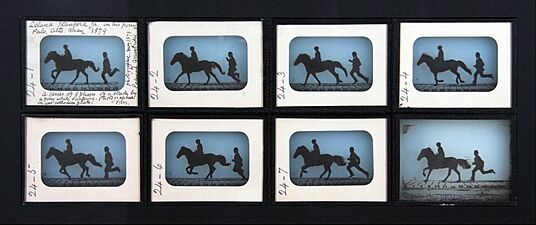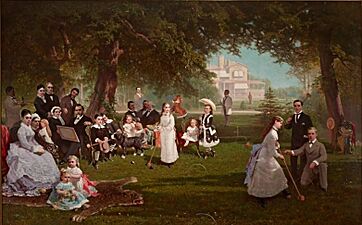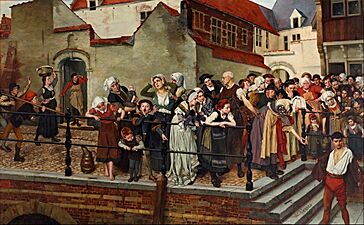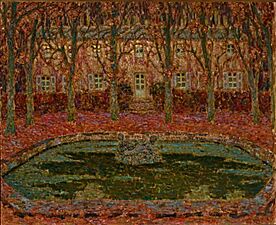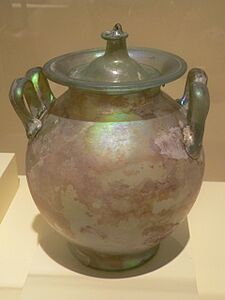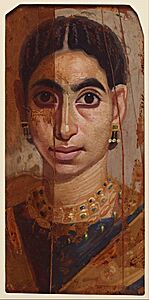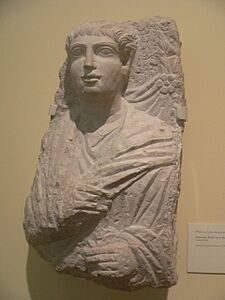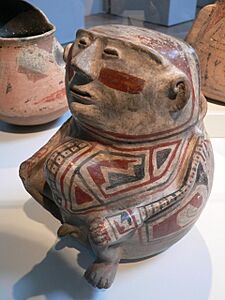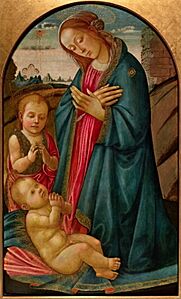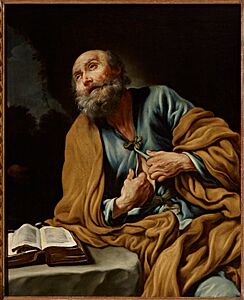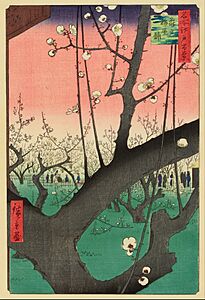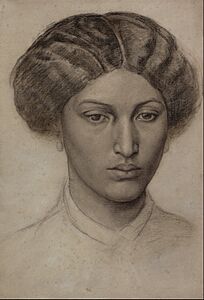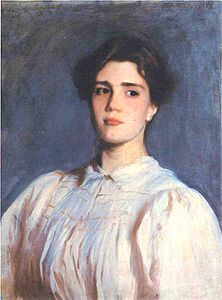Cantor Arts Center facts for kids
 |
|
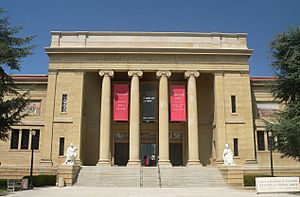
Historic facade and main entrance.
|
|
| Former name | The Stanford University Museum of Art |
|---|---|
| Established | 1894 |
| Location | Stanford, California |
| Type | Art museum |
| Key holdings | Rodin, Muybridge, Diebenkorn, Warhol, Stanford family collections and memorabilia |
| Founder | The Stanford family |
The Cantor Arts Center is a cool art museum located at Stanford University in Stanford, California, USA. It's officially called the Iris and B. Gerald Cantor Center for Visual Arts at Stanford University. Before that, it was known as the Stanford University Museum of Art.
This museum first opened way back in 1894. It has a huge space for showing art, including outdoor sculpture gardens. The Cantor Arts Center is famous for having one of the biggest collections of sculptures by Auguste Rodin outside of Paris. It has 199 of his works, mostly made of bronze. In 2024, the Washington Post said the Cantor was one of the top five college art museums in the U.S. The best part? It's free to visit for everyone!
Contents
History of the Cantor Arts Center
Early Days and Founding
When the museum first opened in 1894, it was called the Leland Stanford Jr. Museum. It was special because a family, Leland Stanford and his wife Jane Stanford, started it privately. They had a huge collection of art from all over the world. This collection was as good as those in major public museums at the time.
The Stanfords traveled a lot. They collected American and European Old Master paintings. They also gathered many ancient items from Egypt, Greece, Rome, Asia, and the Americas. By the early 1900s, the Stanford museum was the largest privately owned museum in the world. It held lots of archaeological finds, cultural items, and art.
The 1906 Earthquake and Challenges
A huge disaster hit the museum during the 1906 San Francisco earthquake. Many parts of the building were badly damaged. The galleries that held Roman, Egyptian, and Asian art were completely destroyed. About three-quarters of the museum building couldn't be fixed.
An expert named Archibald Sayce visited in 1917. He remembered that the museum rooms were still a mess. He said the amazing collection of Greek vases was shattered. Even the Egyptian mummies were torn apart.
After the earthquake, and with Jane Stanford's death the year before, the museum's money ran very low. The university staff and leaders weren't very interested in fixing it. So, the building and its art collection started to fall apart. No one was taking care of the art anymore.
In 1917, Pedro Joseph de Lemos became the Curator and Director of the museum. He worked to organize the museum again. He also started regular art shows. But during this time, many artworks were lost, sold, or given away. The storage area wasn't very secure. Local collectors and dealers would sometimes take things from it. In 1945, the museum officially closed to count all its art.
Rebuilding and New Beginnings
The university's art department used this time to get rid of art they thought wasn't good enough. Many items that weren't valuable were removed. But some important paintings and sculptures from the original Stanford family collection were also removed. These works are now considered much more valuable than people thought in the 1950s.
In 1953, a group called the Committee for Art at Stanford was formed. Their goal was to get people to join and raise money to reopen the museum. In 1954, after nine years of counting everything, the museum opened its doors again.
In 1963, Professor Lorenz Eitner became the head of the art department. With help from staff and the Committee for Art, he began to bring the museum back to life. Over the next 25 years, the art galleries were slowly fixed up. The art collections grew much stronger. They also started programs for art shows, education, and publications.
A big step happened in 1985. Professor Albert Elsen worked with art collector B. Gerald Cantor and others. They helped open the B. Gerald Cantor Rodin Sculpture Garden.
The museum was badly damaged again by the 1989 Loma Prieta earthquake. It had to close. In 1991, Stanford hired Thomas K. Seligman to lead the rebuilding. A company called Polshek & Partners (now Ennead Architects) won the design competition. Construction started on October 26, 1995.
The museum reopened in late 1999. It was renamed the Iris & B. Gerald Cantor Center for the Visual Arts. This was to honor Iris and B. Gerald Cantor. The project cost $36.8 million. This included making the building safe from earthquakes. A new 42,000 square foot wing was also built. This new part had more galleries, a sculpture terrace, an auditorium, a bookshop, and a cafe. The Rodin Sculpture Garden was also updated. New gardens were added to show modern art.
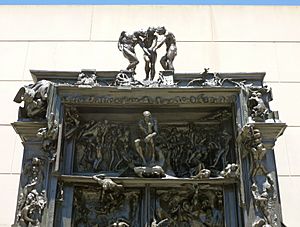
In 2011, Stanford University received a gift of 121 paintings and sculptures. These came from Harry W. Anderson and Mary Margaret Anderson, and their daughter. This collection mostly included post-WW2 American art. It had works by famous artists like Mark Rothko and Jackson Pollock.
To show this new collection, a new museum was built right next to the Cantor Arts Center. It's called the Anderson Collection at Stanford University. The same architect who designed the new wing of the Cantor, Richard Olcott, designed it. The Anderson Collection opened in 2014. It has 15,000 square feet of space for art. Like the Cantor, the Anderson Collection is free and open to everyone.
Art Collections at Cantor Arts Center
The Cantor Arts Center has over 38,000 art pieces. These include many different types of art:
- African Art
- American Art
- Ancient Art
- The Andy Warhol Photography Archive
- Art from Asia and Oceania
- Art from the Indigenous Americas
- Works by Auguste Rodin
- Works by Eadweard Muybridge
- European Art
- Modern and Contemporary Art
- Photographs, Prints, and Drawings
- Richard Diebenkorn Sketchbooks
- Sculptures found around the campus
- Collections and items from the Stanford Family
In January 2021, the Cantor Arts Center started the Asian American Art Initiative (AAAI). This program focuses on studying, buying, keeping, and showing art by Asian American artists. It is led by Aleesa Alexander and Marci Kwon.
Gallery
-
West entrance of the new wing and Rodin Sculpture Garden
-
The Sorceress (1685-1695) by Bartolomeo Guidobono
-
Leland Stanford Jr. on his Pony "Gypsy" (1879) by Eadweard Muybridge
-
Fayum mummy portrait (2nd-3rd century), Egypt
-
Casas Grandes ceramic vessel (14th-15th century), Mexico
-
Plum Garden, Kameido (1857) by Ando Hiroshige
-
Head of a Young Woman (1863-1865) by Dante Gabriel Rossetti
-
The Mountain Nymph, Sweet Liberty (1866) by Julia Margaret Cameron
-
Jean Jacques Henner - Solitude.jpg
Solitude or Penitent Magdalen (c. 1881) by Jean-Jacques Henner
-
Portrait of Sally Fairchild (1884-1887) by John Singer Sargent



